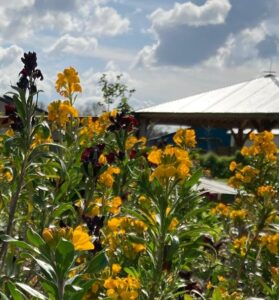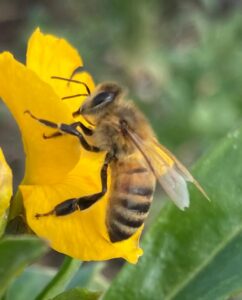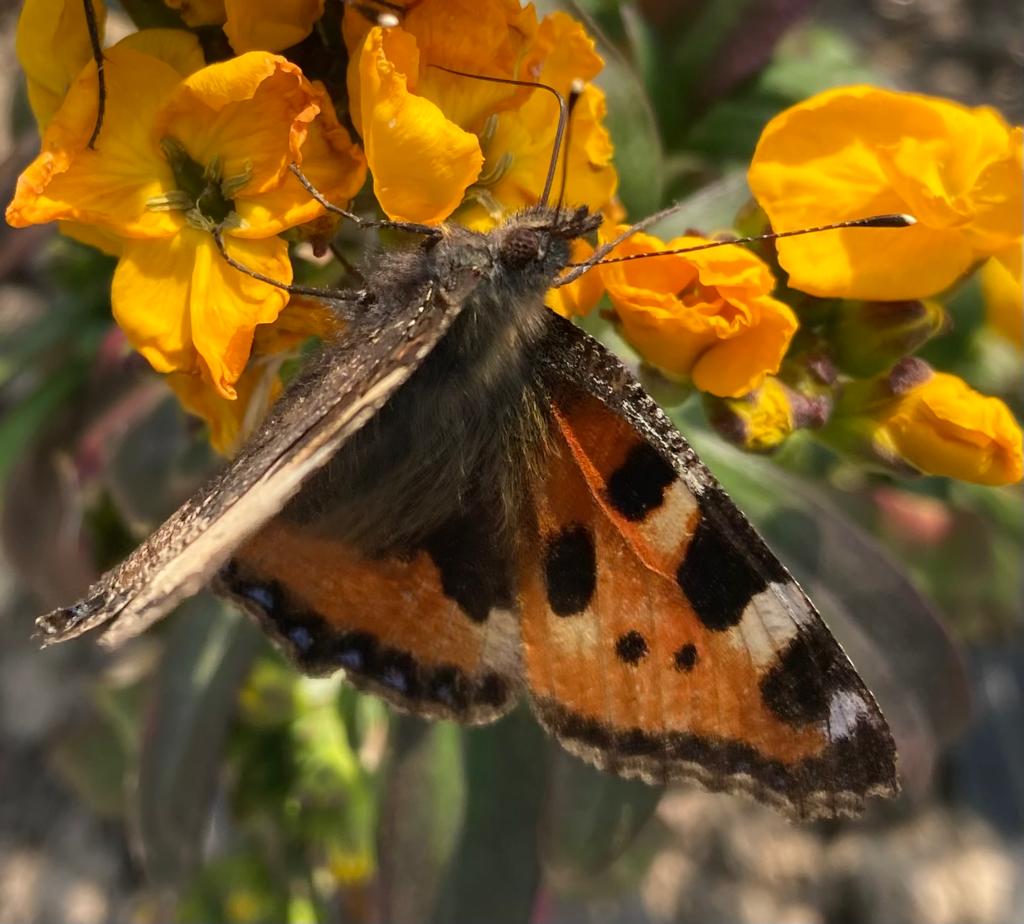Our Gardener, Rebecca Flay, shines the limelight on the Wallflower and explains why these overlooked plants are taking centre stage in the Nectar Gardens at Quince Honey Farm this springtime.
Wallflowers (Erysimum) are flowering plants in Brassicaceae family native to the Mediterranean region where they grow in cracks on cliffs and predominantly against old stone walls hence the reason for their straightforward no-nonsense name. Interestingly, it is thought that this plant’s love of growing against walls once inspired a poet to describe a girl always found sitting alone by the wall at parties having failed to find a dance partner as a Wallflower…. how sad! It is pretty amazing that this term is still commonly used today to describe someone who may have a shy and retiring personality.
Perhaps then it is not quite so surprising that the humble Wallflower has a little bit of an image problem, especially so if some of us also have memories of short-stemmed multi-coloured ‘bedding style’ varieties grown in neat rows in parks and suburban front gardens of the past.
However, their stuffy, ‘off’ trend image is actually totally undeserved. Could a renaissance in the popularity of this plant as seen with Dahlias (one-time old-fashioned relics, thought to be only grown by retired gentlemen on allotments, to Instagram-worthy blooms for the most fashionable gardens) be on the cards? Let’s hope so!

Here in our Nectar Gardens, we are growing the tall cultivars (E. cheiri ‘Covent Garden’, ‘Cloth of Gold’ and ‘Ivory white’) which produce wonderful richly coloured flowers with petals like silk. They are also some of our most intensely scented spring plants filling the air with their sweet fragrance. Wallflowers really do have so much to bring to the garden at a time when colour can be in short supply and are real troopers having an incredibly long flowering time filling the months from spring to mid-summer with their beautiful blooms.
Most importantly for us here these lovely flowers provide a really valuable source of springtime nectar and pollen being visited by our honeybees on days when it’s warm enough for them to fly. Emerging bumblebees, some particular species of solitary bees and butterflies also join the pollinator party that these plants host when the weather is fair. Significantly, our sluggy friends appear to have no interest in attending this particular party and that is a huge plus point for us when growing flowers without the use of slug pellets as part of our working with nature ethos.

We have both perennial and biennial varieties of Wallflower in our Nectar Gardens. A particular favourite is Bowles’s Mauve (a short-lived perennial) which produced pretty spires of dark mauve flowers from late winter right through the summer here last year and was a real winner with our bees. The biennials (E. cheiri) are sown in June in our nursery beds before being transplanted to their final flowering position in Autumn to allow them time to establish before seeing out the long, wet winter. We plant them en-masse (rather than in ones or twos) to create an attractive display which also works better for our foraging bees.
There are so many benefits of growing your biennial Wallflowers from seed as we do, firstly you can design your own colour scheme perhaps go for vibrant velvety oranges and yellows or maybe follow the current trend for combining cooler lemons and whites? You’ll have huge peace of mind by knowing your plants haven’t been treated with chemicals and will get so much pleasure from seeing them germinate, grow, and bloom whilst smelling their sweet scent and watching the bees do their thing! What’s not to love? Let’s raise a cheer for the Wallflower, she really is the belle of the ball and superstar of the spring garden!
If you’d like to find out more about growing Wallflowers in your own garden, visit BBC Gardener’s World Magazine or the RHS websites.
Blog written by Rebecca Flay, Gardener at Quince Honey Farm.

Comments
comments for this post are closed